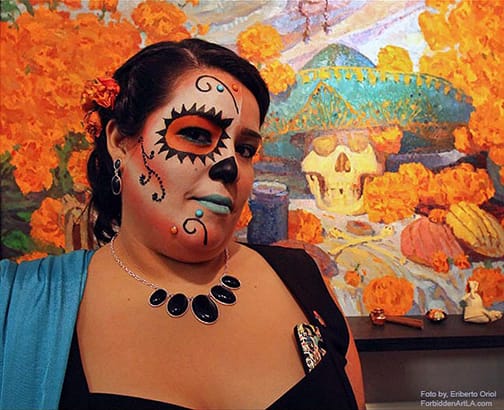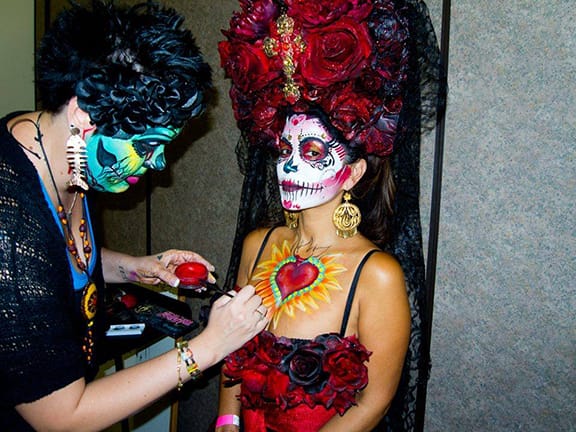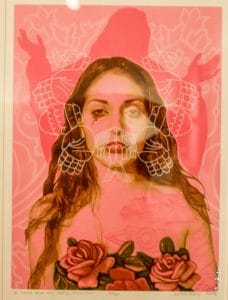Student Showcase: Erika Hirugami

For this installment of Student Showcase, the Flame caught up with art business MA student Erika Hirugami, who recently curated an art exhibition for the El Velorio Day of the Dead event in downtown Los Angeles. We got a sneak peek of the art, the party, and the importance of Latino art in the current market.
How did you end up studying at the Sotheby’s Institute of Art at Drucker?
My ultimate career goal is to direct a Latin American-based institution, be it a museum, a gallery or an alternative space that will allow for difference aesthetic convergences from within the Latin community. The Sotheby’s program not only provides an art-based business degree, but the knowledge I am gaining through the Sotheby’s Institute of Art at CGU allows me to carry myself as a professional within my field of interest while providing me with the necessary tools that enable me to succeed in my endeavors.
Tell us more about your interest in Latin art.
My current curatorial research focuses on the convergence of Latin America with the art market. I am looking at how the Latin American art market fluctuates, and what some of the challenges are of emergent art markets in contrast to our well-established market in the United States. In doing this I am looking for ways in which contemporary Latin American artists can also benefit from the modern-day enterprise that is the art world.

This is of particular interest to me since I come from Latin America myself, Mexico to be exact. As a contemporary, Mexican-emergent curator, I try to immerse myself within the artistic developments of people who share my own subjectivity, or unique background and perspective, and thus participate in providing new platforms for aesthetic transcendence within the art world for Latin American artists.
Even though you are still a student, it seems you’ve already begun your professional career.
While an undergraduate, I studied abroad in Mexico City and held the position of curatorial assistant at MUAC (Museo de Arte Contemporaneo) and editorial coordinator at El Palacio de Bellas Artes. I’ve also contributed toward curatorial efforts in MAZ (Museo de Arte de Zapopan), MAM (Museo de Arte Moderno), and MOLAA (Museum of Latin American Art). This past summer, I was granted the privilege of being the Getty Foundation’s curatorial researcher at MOLAA (Museum of Latin American Art) in Long Beach. I currently hold the title of photographical curator at the Galerie Michael in Beverly Hills. Concurrently, I am the curator for El Velorio (a “multicultural event that celebrates the cultural traditions of Day of the Dead, featuring an art exhibition, live music, an altar installation, and much more,” according to its website). For El Velorio, I recently coordinated an exhibit that brought together over eighty artists from Los Angeles and surrounding areas to have them converge aesthetically about the Latino subjectivity in the city.

Tell us about your role in curating the El Velorio Day of the Dead exhibition.
I was brought into El Velorio as its curator to outline a curatorial statement that would allow for the coming together of artists in different stages of their careers that all work with a variety of media. At the exhibition, we generated an alternative space where artists from different backgrounds could come together and explore the aesthetics of Day of the Dead and modern concerns of Latino society and heritage. By showcasing emerging artists, El Velorio seeks to celebrate the Day of the Dead in a transcendental way that allows visitors to contemplate locally produced artistic developments.